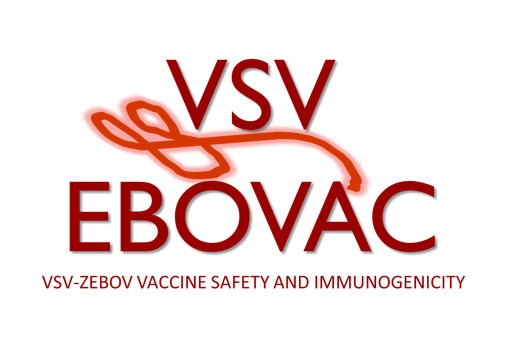The problem: establishing efficacy of a promising Ebola vaccine
2014-2016 saw the biggest Ebola outbreak in history. With the death toll climbing, the race was on to develop and test a vaccine that could halt its spread. One of the most promising vaccines, originally developed by the Public Health Agency of Canada, was granted permission for use in clinical trials in Africa, Europe, the United States and Canada to test its safety and efficacy. However, the number of new cases began to decline before some of the trials started. This meant that efficacy could only be evaluated in one phase three clinical trial. That left some unanswered questions: researchers had good evidence that the vaccine worked, but the exact mechanisms were still unknown. Crucially, it was unclear how long the vaccine could be expected to provide protection in those who received it.
Getting a picture of the immune response – and side effects
The vaccine is based on the vesicular stomatitis virus, genetically engineered to contain a protein from the Zaire strain of the Ebola virus. Over 16, 000 volunteers have received the shot as part of controlled trials. In a study conducted in Guinea during the west African outbreak, the vaccine was shown to be up to 100 % effective using a “ring vaccination” method; this means vaccinating the patient’s close contacts as well as the contacts of those close contacts. In 2015, VSV-EBOVAC got to work using cutting-edge technologies to analyse samples taken from volunteers before and after vaccination during the early clinical trials. This gave them excellent data on the type and strength of the immune responses triggered, as well as the kind of side effects that could be expected.
When a vaccine is administered it leaves its own plasma signature, which is the telltale sign in the blood of vaccine-induced immune activity. VSV-EBOVAC researchers were able to single out the rVSV∆G-ZEBOV-GP plasma signature. They now know more about how antibodies elicited by the vaccine in the body bind to viral glycoproteins, the rod-like proteins that dot the membrane of the virus. The researchers studied the neutralising properties of the antibodies, as well as their affinity and avidity, or how strongly and they bind to the virus.
They also made significant headway in determining the durability of immunity. They found that the antibody responses to rVSV∆G-ZEBOV-GP were shown to be going strong at least one year after immunisation, and VSV-EBOVAC’s follow-on project, VSV-EBOPLUS, later confirmed immunity up to two years (that project will soon be able to confirm if protection is conferred for up to five years). These immune responses were sustained across dose ranges and settings – as well as across gender, age and ethnicity – which is good news in countries where booster campaigns pose practical challenges.
They identified, too, the cytokines and chemokines that could be red flags for adverse reactions such as (self-limiting) arthritis, and showed that the occurrence of this side effect is associated with increased antibody responses over time. Another important discovery was that pre-existing antibodies against the virus didn’t affect the response to the vaccine.
Researchers also studied the response to vaccination using transcriptomics and metabolomics, which quantify, respectively, the messenger RNAs and the metabolites in blood, allowing the identification of characteristic transcriptomic and metabolomics signatures of the rVSV∆G-ZEBOV-GP vaccine.
Filling the translational gap, from the lab to local campaigns
The VSV-EBOVAC project can now provide public-health planners and workers with practical information related to how the vaccine works. It fills a translational gap between R&D in the lab and the response to the major Ebola outbreak that started in the east of the Democratic Republic of Congo in summer 2018. As part of the response to this Ebola outbreak, thousands of people were immunised with rVSV∆G-ZEBOV-GP (around 200,000 in the first year of the outbreak alone), and the data from the project has produced crucial clinical evidence that will speed up licensing. Some of the data have been published open access in important scientific journals and made available to other Ebola-related projects through the Central Ebola+ Information repository The project partners are hopeful it will help researchers studying other haemorrhagic fever disease strains establish safety and efficacy in the development of vaccines.
Speed and access
The project was made up of partners from different disciplines. The speed at which the work could be carried out was cited as one of the key benefits of working in an IMI-funded consortium. Researchers had direct access to the vaccine developer industry partner, another major advantage of IMI-funded projects, and the industry gained access to academic knowledge and skills unavailable in house. For the larger pharmaceutical industry partner, validating the most promising Ebola vaccine candidate for one of the world’s most high-profile, urgent and terrifying diseases was considered very positive for the public perception of the company. University partners also felt participation elevated their profile. As with all IMI projects, one of the key benefits is how the project allowed them to form new networks and partnerships, with SMEs working alongside academia and industry to get to know the context in which each operates, create new spin-off projects and seek funding opportunities.
What’s next?
The vaccine has been granted “Breakthrough Therapy Designation” by the FDA, and PRIority MEdicines (PRIME) status by the European Medicines Agency, and it is being used to support the 2018 outbreak control in the Democratic Republic of Congo. VSV-EBOPLUS is the follow-on phase of VSV-EBOVAC. Also funded by IMI, this project allows the project partners to extend follow up of clinical trials of the rVSV∆G-ZEBOV-GP vaccine to five years and to conduct clinical trials in children. They are refining the plasma signature and digging much deeper into the innate immune responses, and will soon be able to confirm if vaccine-induced antibody titers remain strong at five years after immunisation.
The VSV-EBOVAC project is part of IMI’s Ebola+ programme.

